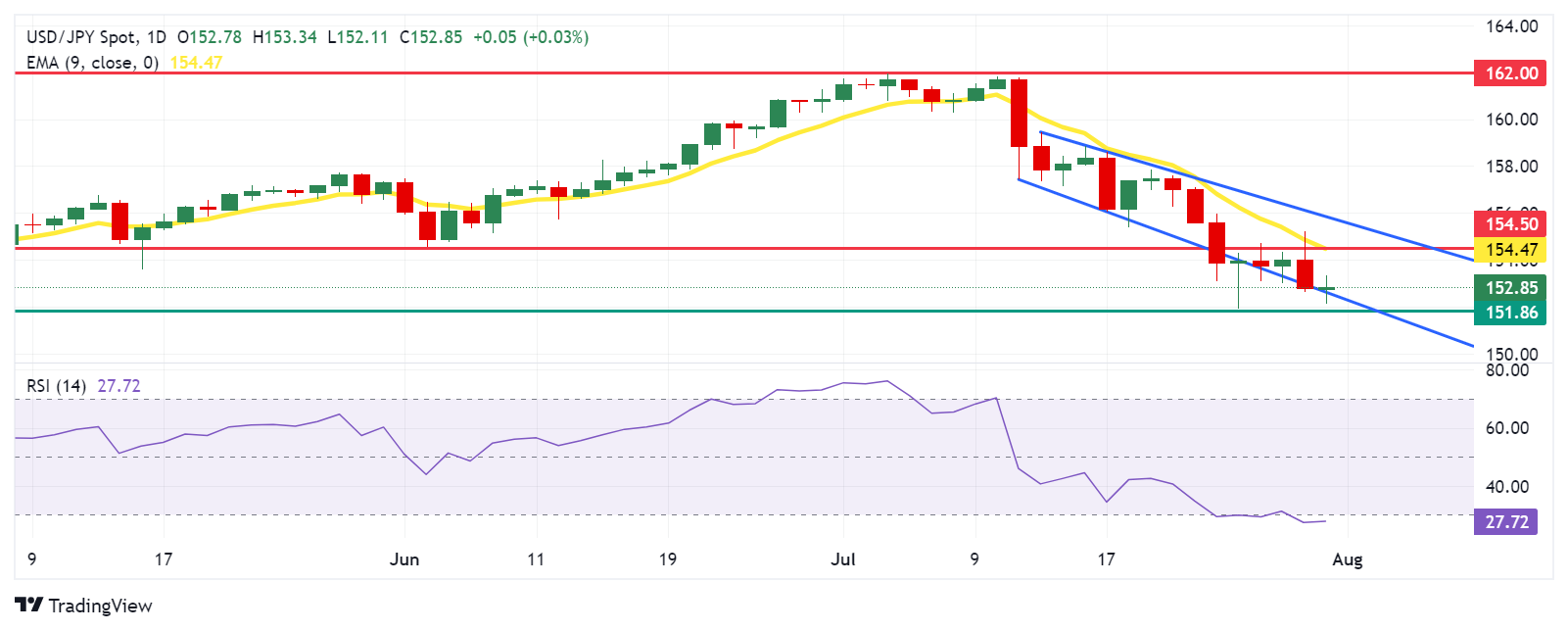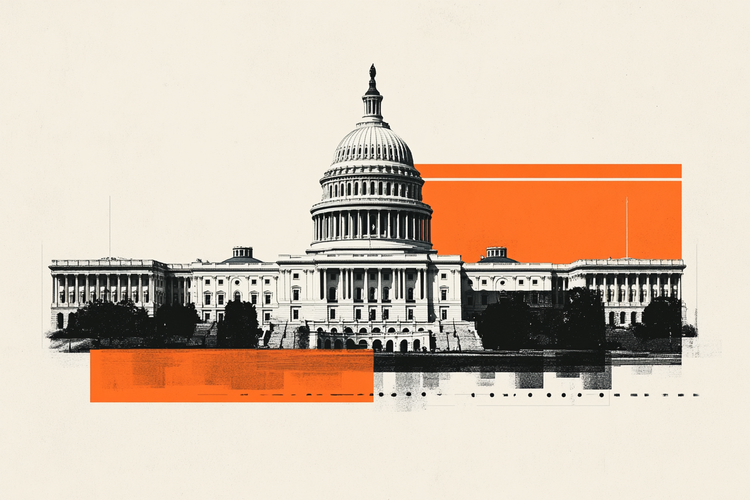- The Japanese Yen trims intraday gains as traders expect the BoJ to hold its short-term rate.
- The Bank of Japan could discuss raising rates at its meeting next week and reducing bond purchases.
- The US dollar faces challenges ahead of the Fed rate decision scheduled for Wednesday.
The Japanese Yen (JPY) trims its daily gains against the US Dollar (USD) as traders anticipate the Bank of Japan (BoJ) monetary policy decision on Wednesday. Investors speculate that the central bank is likely to maintain its short-term rate target between 0% and 0.1% for the third consecutive meeting, following the end of eight years of negative rates in March.
The Bank of Japan is likely to debate whether to raise interest rates at its meeting next week. On Friday, Reuters cited sources familiar with the central bank as saying that “the decision will be difficult to make,” given uncertainty over the outlook for consumption. Another source said, “It’s a matter of judgment, in terms of acting now or later this year.”
In addition, the BoJ is expected to scale back its massive ¥6 trillion ($38.14 billion) monthly Japanese government bond (JGB) purchasing program, as indicated during its June policy meeting.
The US Dollar (USD) is facing challenges ahead of the Federal Reserve’s (Fed) next interest rate decision scheduled for Wednesday. Although the central bank is expected to keep rates unchanged in July, there is growing anticipation of a rate cut in September. This speculation is putting pressure on the USD.
Daily Market Wrap: Japanese Yen Trims Gains Ahead of BoJ Decision
- Japan’s Chief Cabinet Secretary Yoshimasa Hayashi said on Tuesday that the Bank of Japan and the government will closely coordinate, but the details of monetary policy remain the prerogative of the BoJ. Hayashi stressed that the BoJ will work closely with the government to implement appropriate monetary policies aimed at achieving the inflation target.
- Japan’s retail sales rose 3.7% year-on-year in June, beating the expected 3.3% increase and hitting the highest level in four months. Meanwhile, on a monthly basis, retail sales rose 0.6%, a slowdown compared with the previous increase of 1.7%.
- Japan’s unemployment rate was 2.5% in June, slightly lower than market forecasts of 2.6% and the rate seen in the previous four months. This marks the lowest unemployment rate since January.
- Atsushi Mimura, Japan’s newly appointed vice finance minister for international affairs and top foreign exchange official, said in an interview with Bloomberg on Monday that “although the recent depreciation of the yen has both advantages and disadvantages, the drawbacks are becoming more noticeable.” Mimura said intervention is one of the measures available to counter excessive speculation affecting the currency.
- Japan’s top policymaker has urged the government and the Bank of Japan to take into account the weak JPY when formulating policy. The council stressed that the impact of a weak Yen and rising prices on consumption cannot simply be ignored.
- Reuters has published a lengthy article on the Bank of Japan’s (BoJ) past policy review, highlighting a significant shift in the central bank’s approach to inflation. The key message of the review is that Japan is “ready for higher rates.” However, the review will not result in changes to the price target or policy framework.
- Bank of America says strong U.S. economic growth allows the Federal Open Market Committee (FOMC) to “afford to wait” before making any changes. The bank says the economy “remains on solid footing” and continues to expect the Fed to begin cutting rates in December.
Technical Analysis: USD/JPY moves below 153.00
USD/JPY is trading around 152.80 on Wednesday. The daily chart analysis shows that the pair is testing the lower boundary of a descending channel. Moreover, the 14-day Relative Strength Index (RSI) is positioned slightly below 30, suggesting an oversold currency asset situation and a possible near-term bounce.
Immediate support is located near the lower boundary of the descending channel around the 152.60 level. A drop below this level could reinforce the bearish trend and push the USD/JPY pair lower, possibly retesting the May low of 151.86. Additional support could emerge at the psychological level of 151.00.
On the upside, the pair is testing the nine-day exponential moving average (EMA) at the level of 154.47, aligned with the “pullback support turned resistance” at the level of 154.50. Further resistance is anticipated near the upper boundary of the descending channel around 155.80.
USD/JPY: Daily Chart
Japanese Yen PRICE Today
The table below shows the Japanese Yen (JPY) exchange rate against major currencies today. The Japanese Yen was the weakest currency against the Euro.
| USD | EUR | GBP | JPY | CAD | AUD | NZD | CHF | |
|---|---|---|---|---|---|---|---|---|
| USD | -0.11% | -0.10% | 0.03% | -0.03% | 0.67% | -0.04% | -0.01% | |
| EUR | 0.11% | 0.03% | 0.15% | 0.07% | 0.77% | 0.08% | 0.10% | |
| GBP | 0.10% | -0.03% | 0.08% | 0.04% | 0.72% | 0.05% | 0.08% | |
| JPY | -0.03% | -0.15% | -0.08% | -0.01% | 0.63% | -0.07% | -0.00% | |
| CAD | 0.03% | -0.07% | -0.04% | 0.00% | 0.68% | -0.01% | 0.02% | |
| AUD | -0.67% | -0.77% | -0.72% | -0.63% | -0.68% | -0.69% | -0.67% | |
| NZD | 0.04% | -0.08% | -0.05% | 0.07% | 0.01% | 0.69% | 0.03% | |
| CHF | 0.00% | -0.10% | -0.08% | 0.00% | -0.02% | 0.67% | -0.03% |
The heatmap shows percentage changes of major currencies. The base currency is selected from the left column, while the quote currency is selected from the top row. For example, if you choose the Japanese Yen from the left column and move along the horizontal line to the US Dollar, the percentage change shown in the chart will represent the JPY (base)/USD (quote).
Interest Rates FAQs
Financial institutions charge interest rates on loans to borrowers and pay them out as interest to savers and depositors. These are influenced by base interest rates, which are set by central banks based on economic developments. Central banks are typically mandated to ensure price stability, which in most cases means targeting an underlying inflation rate of around 2%.
If inflation falls below target, the central bank can cut base interest rates, in order to stimulate lending and boost the economy. If inflation rises substantially above 2%, the central bank typically raises base lending rates to try to reduce inflation.
In general, higher interest rates help strengthen a country’s currency by making it a more attractive place for global investors to park their money.
Higher interest rates influence the price of Gold because they increase the opportunity cost of holding Gold rather than investing in an interest-bearing asset or depositing cash in the bank.
If interest rates are high, the price of the US Dollar (USD) usually rises and since Gold is priced in dollars, the price of Gold falls.
The federal funds rate is the overnight rate at which U.S. banks lend to each other. It is the official interest rate typically set by the Federal Reserve at its FOMC meetings. It is set within a range, for example 4.75%-5.00%, although the upper limit (in this case 5.00%) is the figure quoted.
Market expectations for the Federal Reserve funds rate are tracked by the CME’s FedWatch tool, which measures the behavior of many financial markets in anticipation of future Federal Reserve monetary policy decisions.
Source: Fx Street
I am Joshua Winder, a senior-level journalist and editor at World Stock Market. I specialize in covering news related to the stock market and economic trends. With more than 8 years of experience in this field, I have become an expert in financial reporting.








